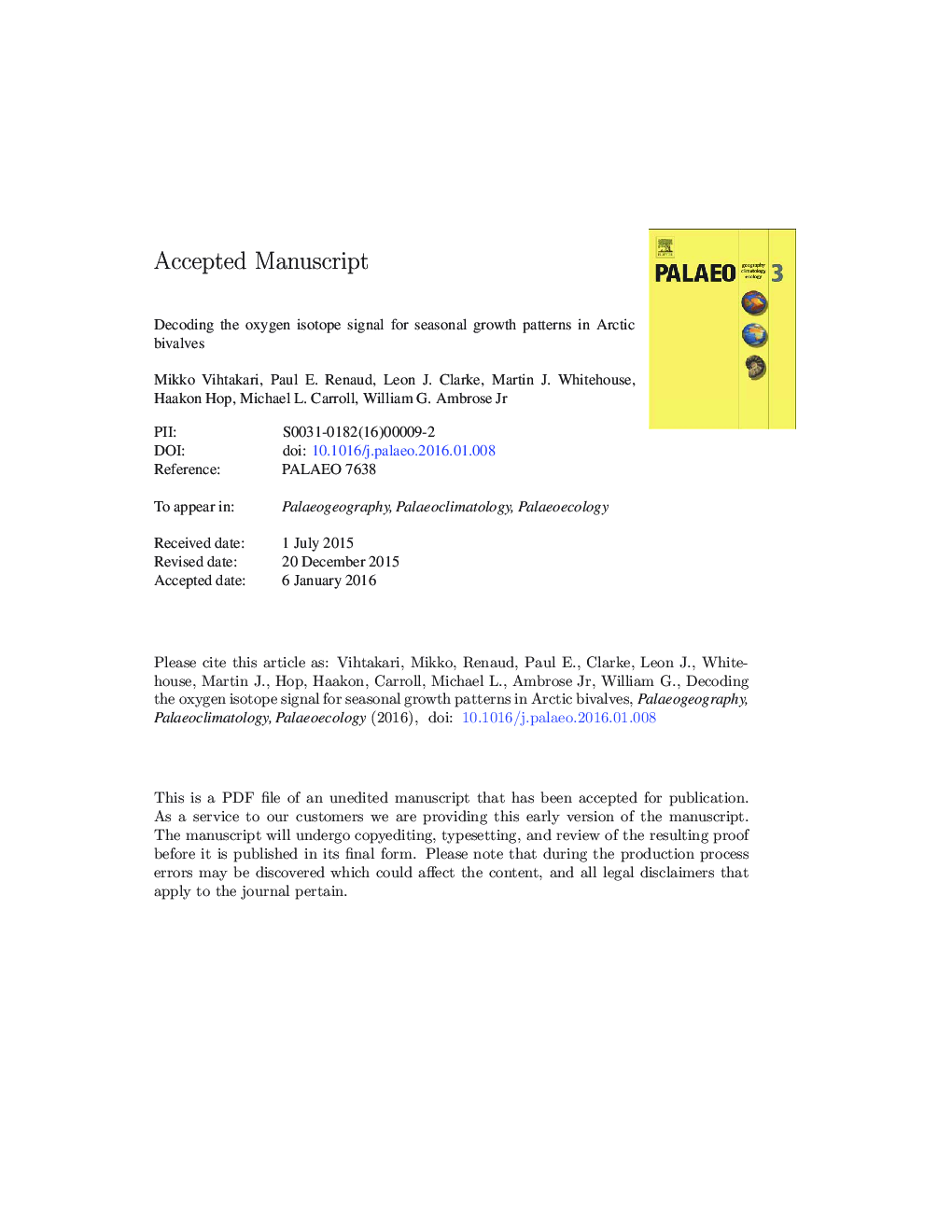| کد مقاله | کد نشریه | سال انتشار | مقاله انگلیسی | نسخه تمام متن |
|---|---|---|---|---|
| 6349440 | 1622145 | 2016 | 96 صفحه PDF | دانلود رایگان |
عنوان انگلیسی مقاله ISI
Decoding the oxygen isotope signal for seasonal growth patterns in Arctic bivalves
ترجمه فارسی عنوان
رمز گشایی سیگنال ایزوتوپ اکسیژن برای الگوهای رشد فصلی در دوچرخه های قطب شمال
دانلود مقاله + سفارش ترجمه
دانلود مقاله ISI انگلیسی
رایگان برای ایرانیان
کلمات کلیدی
موضوعات مرتبط
مهندسی و علوم پایه
علوم زمین و سیارات
فرآیندهای سطح زمین
چکیده انگلیسی
Chemical and physical variations in skeletal structures of marine organisms can reflect environmental variability, forming the basis for reconstructing the conditions in which the organism lived. The successful use of these bio-archives for reconstructing seasonal environmental conditions is dependent on understanding intra-annual growth patterns and timing of their deposition within skeletal structures. We studied intra-annual shell growth patterns, as well as the timing and environmental processes associated with winter growth line deposition in two circumpolar bivalve mollusks, Serripes groenlandicus and Ciliatocardium ciliatum. Shell growth deposited during a 1-year deployment on oceanographic moorings in Kongsfjorden and Rijpfjorden, Svalbard, was analyzed in situ for δ18O values using high spatial resolution secondary ion mass spectrometry (SIMS). A new digital method was developed to measure the location of SIMS spots along chronologically deposited shell material. Dynamic time warping algorithms were adapted to align SIMS-determined δ18O values with δ18O values predicted from continuous mooring instrument recordings of seawater temperature and salinity, in order to derive intra-annual shell growth models. The resulting growth models indicated that the prominent winter growth band was formed during a slow shell growth period lasting from December until May in Kongsfjorden and from November until mid-June in Rijpfjorden. The length of the slow growth period was most likely controlled by food availability. Shell growth rate during the growing season was significantly explained by temperature (marginal R2 = 0.29, p < 0.001) indicating that temperature partly drives shell growth rate when the food supply is sufficient. The insights into intra-annual shell growth of Arctic bivalves and the methods developed in our study are important contributions for further development of bivalve shells as proxy archives.
ناشر
Database: Elsevier - ScienceDirect (ساینس دایرکت)
Journal: Palaeogeography, Palaeoclimatology, Palaeoecology - Volume 446, 15 March 2016, Pages 263-283
Journal: Palaeogeography, Palaeoclimatology, Palaeoecology - Volume 446, 15 March 2016, Pages 263-283
نویسندگان
Mikko Vihtakari, Paul E. Renaud, Leon J. Clarke, Martin J. Whitehouse, Haakon Hop, Michael L. Carroll, William G. Jr,
